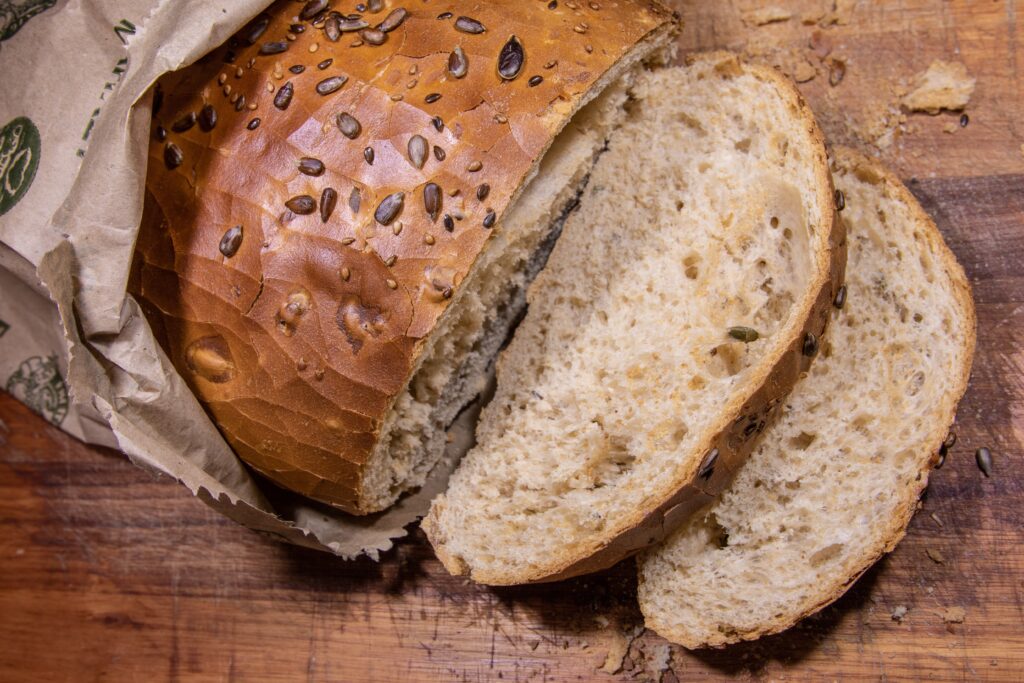Who doesn’t love the pleasant smell of that fresh loaf of sourdough, pita, baguette, and even multi-grain bread? Bread is one the most versatile food item, used in a variety of dishes in several different ways, be it sandwiches, soup, pasta, burgers, or even pizzas. It is one food item found in all households, but the one issue we all face is its storage. The most common method of storing bread is keeping it in the refrigerator, but the question is whether the refrigerator prevents it from molding.
Does refrigerating bread prevent mold?
Let’s look at the article below to know if refrigerating can prevent mold on bread from developing:
Refrigerating a loaf of bread can prevent the bread from going bad and developing mold over it, making it safe to consume for a little longer. However, preserving bread in the refrigerator can only slow down the process of mold development; fungus can still develop if the packet stays in the fridge for days. Let’s understand the science behind this; when the refrigerator cools down our food, the bacteria are deactivated, further slowing down the process of mold development, which keeps food items fresh for a little longer.

One thing to keep in mind before refrigerating bread is to avoid using plastic packets to cover the loaves. One must ensure they avoid using plastic packets to store the bread, as these packets allow the mold to grow much faster. Some of the alternatives that work best and are also environment-friendly are paper bags and bread boxes. Bread boxes keep the humidity away from bread and ultimately prevent bacteria and fungus from growing. You can check Amazon and supermarkets for some great options.
Well, another way to keep bread fresh and consumable more extendedly is to freeze it. Many consider freezing a better option than refrigerating to prevent mold. However, if you decide to freeze the bread, ensure that you slice it priorly, so it is easier to use later.
Tips to Prevent Mold Growth on Bread
- Check Bread Before Purchase: Before buying bread, inspect it for any signs of mold. Even a small spot can indicate that the bread is starting to go bad.
- Store in a Dry Place: Mold thrives in moisture. Ensure that your bread storage area, whether it’s a bread bin or refrigerator, is dry.
- Use Clean Hands: Always handle bread with clean hands to prevent introducing any additional mold spores or bacteria.
- Seal Well: Whether you’re using a bread bin, plastic bag, or any other storage method, ensure that the bread is sealed well to prevent exposure to air and contaminants.
- Consume Quickly: The longer bread sits, the higher the chance of mold growth. Try to consume bread within a week of purchasing or baking.
Frequently Asked Questions (FAQs)
1. What is the best way to store bread to prevent mold?
The best way to store bread is to refrigerate it by packing it in a paper bag or a bread box. One must keep the bread in a dry place to prevent mold growth.
2. Does refrigerating bread slow molding?
Bread cools down when we refrigerate it, further delaying mold development over the bread and making the bread’s loaf of bread safe to consume.
3. Is it OK to store bread in the refrigerator?
It is only advised to store bread in the refrigerator when you want it to stay fresh and consumable for a few more days.
4. What is the best way to keep bread fresh?
The best way to keep bread fresh is to wrap it and store it at room temperature. However, if you want to prevent the bread from molding, you can store it in the refrigerator.
Conclusion
Now that we know that refrigerating bread can prevent it from going stale quickly, it is time to indulge in our favorite loaves. We hope this article cleared the queries regarding bread and its proper storage to avoid mold and fungus growth.
Stay tuned for more such content!
Also Read: How to reheat brown rice?

